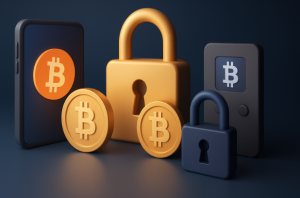
Understanding Crypto Wallets: Custodial vs. Non-Custodial Options
A crypto wallet is where you keep your digital money. It doesn’t hold coins like a regular wallet. It keeps special keys that let you use your crypto. Without a wallet, you can’t send or receive crypto. It helps you use the blockchain. Choosing the right wallet is important, especially at an online casino. You need one that works well and keeps your money safe.
Two Paths: Custodial and Non-Custodial
Crypto wallets are categorized into two types:
- Custodial wallets
- Non-custodial wallets
A custodial wallet means another party—usually or most likely a crypto exchange—is the one holding your private keys. They manage your assets for you.
The good thing about a non-custodial wallet is that you get to be in total control. You own the keys. You’re the only one who can access your funds. This difference changes everything.
The Bank-Like Experience
Think of custodial wallets like using a bank. You sign up with a username and password. You can reset your login if needed. The platform takes care of security and backups. This is great for beginners. It feels familiar. You don’t have to remember long codes or worry about losing keys. But there’s a trade-off. You give up full control. If the platform gets hacked or freezes accounts, your funds are at risk.
Freedom Comes With Risk
Non-custodial wallets offer freedom. No one can freeze your funds. No one can stop a transaction. You have full access at all times. But there’s a big downside: you’re fully responsible. Lose your private key? You lose your coins. There’s no “forgot password” button. This type of wallet suits people who want maximum privacy and control. But it demands care, planning, and responsibility.
Mobile, Hardware, and Web Wallets
Crypto wallets also come in different forms. Each has pros and cons.
- Mobile wallets are apps on your phone. Easy to use. Great for small amounts.
- Hardware wallets are physical devices. Very secure. Best for long-term storage.
- Web wallets are browser-based. Convenient, but often custodial.
Choose based on your lifestyle. If you trade often, a mobile wallet may help. If you hold for years, a hardware wallet is smarter.
Custodial Wallets: Pros and Cons
Pros:
- Easy to use
- Recovery options
- Great for new users
- Often part of trading platforms
Cons:
- Not truly private
- Subject to hacks
- Can lose access during downtime
- Not fully decentralized
It works—until the bank has a problem.
Non-Custodial Wallets: Pros and Cons
Pros:
- You control everything
- Full privacy
- Not tied to one platform
- Immune to third-party freezes
Cons:
- Lose your key, lose your funds
- Setup can be tricky
- No backup if you forget passwords
- May not be ideal for fast trading
With great power comes great responsibility. That’s the non-custodial motto.
Security Isn’t Just About Tools
No wallet is 100% safe without good habits.
- Use two-factor authentication whenever you can.
- Store your seed phrase offline. Never share it.
- Use strong, unique passwords.
- Keep software up to date.
- Don’t click suspicious links or apps.
Security starts with you. Even the best wallet can’t fix careless behavior.
Best Practices for Storing Crypto
Split your holdings. Don’t keep everything in one place. Use different wallets for different goals. For example:
- A custodial wallet for daily trading
- A non-custodial hardware wallet for long-term storage
- A mobile wallet for spending
Backup everything. Write down your seed phrase. Store it in a fireproof, waterproof container. Never upload it to the cloud.
Test your setup. Don’t rush to send large sums. Start with a small amount to make sure your process works.
What the Experts Recommend
Many crypto experts suggest using a mix of wallet types. For beginners, start with a trusted custodial wallet. Learn how things work. As you gain confidence, explore non-custodial options. Learn how to use hardware wallets. Take the time to see and comprehend what all this means, specifically what “holding your own keys” pertains to. Don’t rush. Go step by step.
